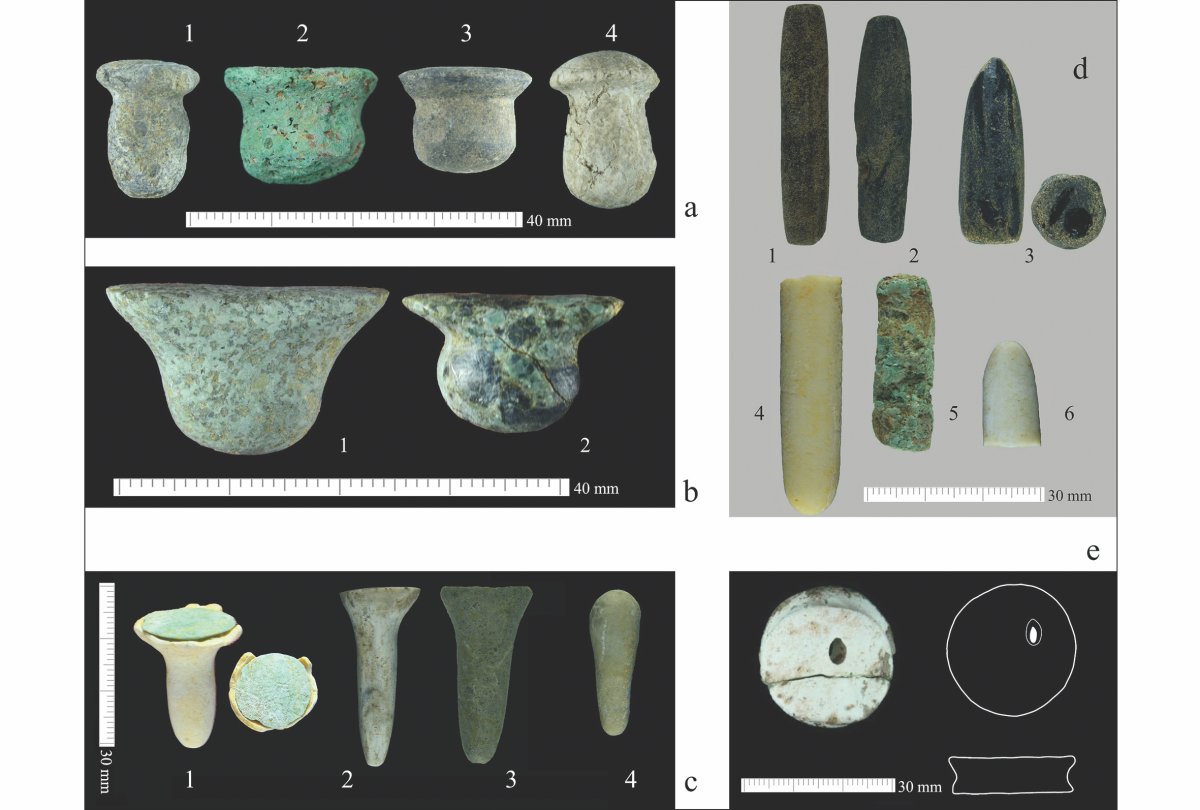Archaeologists have found early evidence of prehistoric body piercing in human burials dated to around 11,000 years ago.
In a study recently published in the journal Antiquity, a team of researchers have argued that more than 100 ornamental objects found in the burials at the Neolithic site of Boncuklu Tarla in Turkey were once worn as piercings.
These ornaments were found around the ears and chins of the human remains in the burials—a strong indication that this was their purpose, according to the researchers.
"The significance [of the findings] is that things we do today—i.e. use body piercings—can be traced back to some of our prehistoric ancestors many thousands of years ago at a time when they were just starting to settle down in the first villages," Emma Baysal, an archaeologist with Ankara University in Turkey and co-author of the study, told Newsweek.

She added: "Basically [this was] a time when their lifestyles increasingly began to look like how we live today. In those days, piercings were a risky business because they probably couldn't easily treat infections."
Eighty-five of the documented ornaments are complete. They are made from various materials, including limestone, obsidian (a type of volcanic glass) and river pebbles.
The position the artifacts were found in among the human remains, as well as the varying sizes and shapes, suggest that they were made for use as ear and lower lip piercings (called labrets).
This hypothesis is further supported by analysis of the skeletons, which identified wear on the lower incisors consistent with examples of labret-wearing in various modern and past cultures.
The researchers argue that the finds from Boncuklu Tarla represent the "earliest contextual evidence" for the use of body augmentation involving the piercing of bodily tissue in southwest Asia.
"We have found the earliest examples of these ornaments still in place on the skeletons of the people who used them, thereby proving exactly how these ornaments were used at this early date for the first time," Baysal said.

She continued: "We think these are the earliest examples yet recorded in their original context on the skeletons of the people who used them. We have earlier indirect evidence of labret use from other sites—but this is through wear on teeth and not directly from ornaments on skeletons."
Small, disc or nail-like objects that resemble body piercing ornaments have been found at Neolithic sites in southwest Asia (10,000–6,000 B.C.) before. But no clear evidence for their use as piercings had previously emerged.
"We knew that there were earring-like artifacts in the Neolithic, they have been found at many sites," Baysal said in a press release. "But we were lacking in situ finds confirming their use on the human body before the late Neolithic."
The latest findings will allow researchers to reinterpret many hundreds of artifacts known from the Neolithic period across western Asia and eastern Europe that have previously been identified as other objects, according to Baysal.
Examination of the skeletons at Boncuklu Tarla found that female and male burials had piercings. But none were observed in the child burials. This suggests that the piercings were not simply worn for aesthetic purposes, but had some kind of social significance—perhaps signifying that the individual had reached maturity.

The finds shed new light on how the Neolithic people who once occupied Boncuklu Tarla expressed their identities through personal appearance. More than 100,000 ornamental artifacts have been excavated to date at the site, including the 100 or so that are thought to have been used for body piercing purposes.
"They had very complex ornamentation practices involving beads, bracelets and pendants, including a very highly developed symbolic world, which was all expressed through the medium of the human body," Baysal said in the press release.
Do you have a tip on a science story that Newsweek should be covering? Do you have a question about archaeology? Let us know via science@newsweek.com.
Uncommon Knowledge
Newsweek is committed to challenging conventional wisdom and finding connections in the search for common ground.
Newsweek is committed to challenging conventional wisdom and finding connections in the search for common ground.
About the writer
Aristos is a Newsweek science reporter with the London, U.K., bureau. He reports on science and health topics, including; animal, ... Read more
To read how Newsweek uses AI as a newsroom tool, Click here.






